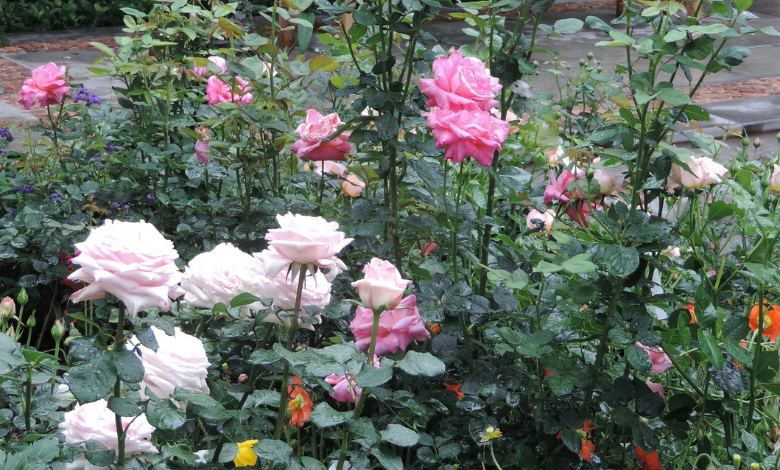Entertainment
Roses: Frequently asked questions

Whether you are taking the plunge and planting your first rose, or are an old hand, there are always questions about growing roses, whether it’s about planting, pruning, or dealing with those nasty pests that chomp the leaves and flowers.
Over the years rose grower Ludwig Taschner has heard them all, and he answers the most often asked questions.
Last month was rose pruning time, but life can get in the way. Is August too late to still prune?
Answer: Even if you haven’t yet pruned, there is still time to do it and in August it is much easier to see how many eyes have sprouted, showing how the rose wants to grow. Where strong new growth has sprouted further down the stem, cut back to this strong growth. Cutting down to it channels the energy into that growth and the result is a strong new stem. Just bear in mind that pruning by and after mid-August will delay the flowering by a week or two.
By August, roses pruned in July start sprouting healthy purple-red new shoots but what if the roses are just producing smallish green leaves?
Answer: With the exception of ‘Iceberg’ that produces pinkish green new leaves, such small green leaves are a sign that the roots are desperate for food and water often due to compact soil or to root competition from nearby trees, shrubs and even perennials. When pruning in July it is very important to loosen the soil quite deeply around the roses and dig in fresh compost and other organics to aerate the soil. There is still time to do it. Water well after digging over the soil and new hair roots will start forming.
A question that concerns most gardeners is when it is the right time to plant roses. The simple answer is all year round, because the roses established in plastic bags can be transplanted at any time.
Is there a right or wrong way to plant roses?
Answer: When planting a rose the bud union, which is the thickened knob at the base of the rose needs to be just under the soil surface. This is not as complicated as it sounds because all roses are sold in plastic grow bags and are already planted at the right depth. All you need to do when planting is to make sure that the rose is planted at the same level in the soil as it was in the plastic bag.
More importantly, before planting, dig a 50cm deep hole. Mix compost and Vigorosa fertiliser into the topsoil and return to the hole and water well. The following day, remove half of the soil. Take the rose out of its plastic bag and place it in the hole, adding or removing soil until the rose is at the correct height, with the bud union just below the surface. Gently firm down the soil and water well.
Another burning question is can a new rose be planted where an old rose used to grow?
Answer: Yes, you can but not if the rose being replaced was there for more than three years because rose roots leave a residue in the soil which stunts the growth of new roses. When replacing an older rose, dig out the soil where the rose grew and sink a cardboard box into the hole. Fill the box with proper potting soil and plant the new rose. By the time the cardboard has rotted, the effect of the previous rose will have dissipated.
Every gardener wants blooms and more blooms, what is the most effective fertiliser for roses?
Answer: a rose feeds best through its “feet” and the best option is a granular fertiliser, like Ludwig’s Vigorosa N:P:K 5-1-5 with additional magnesium, calcium and sulphate. Rose bushes need 30g once a month and larger shrub roses and climbers need 60g. The producers of the fertiliser have worked out the exact amount that roses need so don’t be tempted to over fertilise as this could burn the roots and leaves. Always water well after fertilising. We advise gardeners to stop fertilising in May to allow the rose to go dormant.
Is it true that my roses will flower better when the dead rose blooms are cut off?
Answer: Yes it is. When a spent bloom is cut off, a message is sent to the roots that there is no flower and a new flower needs to be made. The normal procedure for deadheading is to cut off the bloom with two or three leaves further down the stem. Doing this weekly or even daily will encourage a non-stop flowering and improve the quality of the new flowering stems. It is also important that the rose is fertilised once a month and















